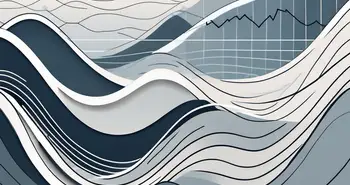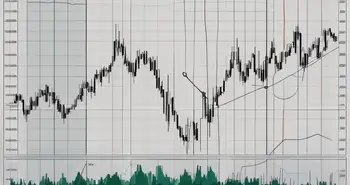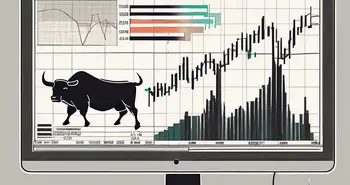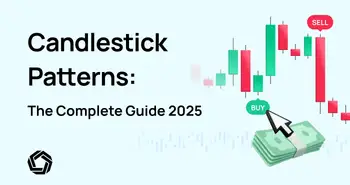Unveiling the Power of Wolfe Waves: A Comprehensive Guide

As an expert trader, I am excited to share with you the incredible potential of a trading concept called Wolfe Waves. In this comprehensive guide, we will dive deep into the origins, theory, identification, significance, strategies, misconceptions, and concluding thoughts of Wolfe Waves. By the end of this article, you will have a solid understanding of how to utilize this powerful trading tool to enhance your trading decisions.
Understanding the Concept of Wolfe Waves
Wolfe Waves is a unique trading pattern that was first discovered by legendary trader Bill Wolfe. The theory behind Wolfe Waves revolves around the idea that financial markets move in predictable wave patterns, and these patterns can be used to forecast future price movements. By understanding the underlying principles and key components of Wolfe Waves, traders can gain an edge in the market and potentially increase their profitability.
When analyzing price charts, traders often look for patterns that can provide insights into future market behavior. Wolfe Waves focus specifically on the pattern formed by waves 1, 2, 3, 4, and 5 in a price chart. These waves are believed to have specific ratios and structures that can be used to identify potential trading opportunities.
The Origin and Theory Behind Wolfe Waves
The concept of Wolfe Waves is rooted in the Elliott Wave Theory, which suggests that price movements can be categorized into waves. Developed by Ralph Nelson Elliott in the 1930s, this theory proposes that market prices follow a repetitive pattern of five waves in the direction of the main trend, followed by a corrective wave of three waves. Wolfe Waves take this concept further by focusing on the specific structure and ratios between these waves.
According to the theory, Wolfe Waves are formed when waves 1, 2, 3, 4, and 5 create a specific pattern. Wave 1 is the initial wave in the direction of the main trend, followed by wave 2, which is a corrective wave. Wave 3 is the longest and most powerful wave, often exceeding the trendline drawn from waves 1 and 2. Wave 4 is a corrective wave that retraces a portion of wave 3, and finally, wave 5 completes the pattern by moving beyond the trendline drawn from waves 1 and 4.
Understanding the mathematical calculations and principles behind Wolfe Waves can greatly enhance your ability to spot them in the market and seize profitable opportunities. Traders often use various technical indicators and tools to identify potential Wolfe Waves, such as trendlines, Fibonacci retracements, and oscillators. By combining these tools with a solid understanding of the theory behind Wolfe Waves, traders can increase their confidence in their trading decisions.
Key Components of Wolfe Waves
To identify Wolfe Waves, it is crucial to be aware of their key components. These include the wave structures, known as Wolfe Waves, and specific ratios between the waves. The wave structures consist of five waves, as described earlier, and they form a distinct pattern on the price chart. Traders often look for specific characteristics within each wave, such as the length and amplitude, to confirm the presence of a Wolfe Wave.
In addition to the wave structures, Wolfe Waves also have specific ratios between the waves. These ratios are derived from Fibonacci numbers and are believed to provide important clues about the potential strength and duration of the wave pattern. Traders often use Fibonacci retracements and extensions to measure these ratios and determine the potential price targets for the completion of a Wolfe Wave pattern.
By learning to recognize and analyze these components, traders can be better equipped to identify potential Wolfe Waves in the market and make informed trading decisions. It is important to note that Wolfe Waves, like any trading pattern, are not foolproof and should be used in conjunction with other technical and fundamental analysis tools. However, with practice and experience, traders can develop a keen eye for spotting Wolfe Waves and potentially capitalize on the predictable price movements they represent.
Identifying Wolfe Waves in the Market
Spotting Wolfe Waves in the market involves recognizing the distinct five-wave pattern that forms the foundation of this trading concept. Once you understand the structure of Wolfe Waves, you can start identifying both bullish and bearish Wolfe Waves in real-time market data. Let's explore this further.
Recognizing the Five Wave Pattern
The first step in identifying Wolfe Waves is being able to spot the five-wave pattern. This pattern consists of three downward waves, numbered 1, 3, and 5, and two upward waves, numbered 2 and 4. By understanding the specific rules that define this pattern, you can begin to identify potential Wolfe Waves as they unfold.
When analyzing the five-wave pattern, it's important to pay attention to the relationship between the waves. Wave 2 should not exceed the start of wave 1, and wave 4 should not overlap with the end of wave 1. These rules help confirm the validity of a potential Wolfe Wave.
Additionally, the length of wave 3 should be greater than the length of wave 1, and the length of wave 4 should be greater than the length of wave 2. These proportional relationships provide further confirmation of a potential Wolfe Wave.
Furthermore, it's essential to consider the time it takes for each wave to complete. Generally, wave 3 should take the least amount of time to form, while wave 4 should take the most time. These time relationships can help distinguish between a potential Wolfe Wave and other market patterns.
Spotting Bullish and Bearish Wolfe Waves
Once you have a solid grasp of the five-wave pattern, it's time to identify whether a Wolfe Wave is bullish or bearish. A bullish Wolfe Wave occurs when the price makes higher lows and higher highs, indicating an upward trend. This type of Wolfe Wave suggests that buying pressure is increasing, and traders may consider entering long positions.
Conversely, a bearish Wolfe Wave occurs when the price makes lower highs and lower lows, signaling a downward trend. In this case, selling pressure is increasing, and traders may consider entering short positions to capitalize on the expected price decline.
When identifying bullish or bearish Wolfe Waves, it's crucial to consider the overall market context. Is the broader market trending up or down? Are there any significant support or resistance levels nearby? These factors can provide additional confirmation and enhance the probability of a successful trade.
Furthermore, it's important to note that not all potential Wolfe Waves will materialize into tradable opportunities. Traders must exercise caution and use other technical analysis tools and indicators to validate their findings before executing trades.
By understanding the characteristics of each type of Wolfe Wave and considering the broader market context, traders can better align their trading strategy with market conditions. This increased awareness and knowledge can potentially lead to more profitable trading decisions.
The Significance of Wolfe Waves in Trading
Now that you can identify Wolfe Waves, let's explore their significance in trading. Understanding the potential price targets and timing entry and exit points with Wolfe Waves can give you a competitive edge in the market and enhance your trading strategy.
Wolfe Waves, named after the legendary trader Bill Wolfe, have gained popularity among technical analysts and traders due to their ability to provide valuable insights into market trends and potential price movements. These patterns, which resemble waves, can be identified on various timeframes, making them applicable to different trading strategies.
Predicting Price Targets with Wolfe Waves
Wolfe Waves offer traders a unique advantage by providing potential price targets. By analyzing the formation of a Wolfe Wave, you can make educated predictions about where the price may move next. This can help you set profit targets and adjust your risk-reward ratio, ultimately leading to more profitable trades.
When a Wolfe Wave pattern forms, it indicates a potential reversal in the price trend. The pattern consists of five waves, with the second and fourth waves acting as the retracement waves. By measuring the distance between the first and third waves, you can estimate the potential price target for the fifth wave, which is the wave that completes the pattern.
For example, if the first and third waves have a distance of $10, you can expect the fifth wave to reach a similar distance from the fourth wave's low point. This knowledge allows you to set realistic profit targets and make informed trading decisions.
Timing Entries and Exits Using Wolfe Waves
Timing is crucial in trading, and Wolfe Waves can be a valuable tool for identifying optimal entry and exit points. By understanding the formation and completion of a Wolfe Wave, you can time your entries to maximize the probability of success.
When a Wolfe Wave pattern is forming, you can look for specific entry signals to initiate a trade. These signals may include the breakout of a trendline or the confirmation of a reversal pattern. By waiting for these signals, you increase the likelihood of entering a trade at a favorable price, reducing the risk of buying or selling too early.
Furthermore, Wolfe Waves can provide confirmation or warning signs when it's time to exit a trade, helping you protect your capital. Once the fifth wave reaches its target, it often leads to a reversal or a significant correction. By recognizing this, you can exit your position and secure your profits before the market turns against you.
It's important to note that while Wolfe Waves can be a powerful tool, they should not be used in isolation. Combining them with other technical indicators and risk management strategies can further enhance their effectiveness.
Strategies for Trading with Wolfe Waves
Now that you understand the significance of Wolfe Waves, let's explore some strategies for trading with them. By combining Wolfe Waves with other technical indicators and effectively managing risk, you can further optimize the effectiveness of this trading approach.
Trading with Wolfe Waves offers a unique opportunity to capitalize on market reversals and ride the waves of price action. However, to maximize your trading potential, it is important to consider various factors and employ additional techniques.
Combining Wolfe Waves with Other Technical Indicators
While Wolfe Waves can be a powerful standalone trading tool, combining them with other technical indicators can provide additional confirmation and enhance your trading decisions. Popular indicators such as moving averages, Fibonacci retracements, and support and resistance levels can be used in synergy with Wolfe Waves to increase the probability of successful trades.
For example, by using moving averages in conjunction with Wolfe Waves, you can identify the overall trend and determine whether a potential Wolfe Wave pattern aligns with the prevailing market direction. This can help filter out false signals and improve the accuracy of your trading entries.
Incorporating Fibonacci retracements can also be beneficial when trading with Wolfe Waves. These retracement levels can act as potential price targets, allowing you to set profit targets and manage your trades more effectively. By aligning the completion of a Wolfe Wave pattern with a Fibonacci retracement level, you can increase the likelihood of a successful trade.
Furthermore, support and resistance levels can serve as additional confirmation when trading with Wolfe Waves. If a Wolfe Wave pattern aligns with a significant support or resistance level, it adds further strength to the trade setup. This confluence of technical factors can significantly improve the probability of a successful trade.
Managing Risk when Trading with Wolfe Waves
Effective risk management is vital for long-term trading success. When trading with Wolfe Waves, it's essential to implement proper risk management strategies, such as setting stop-loss orders and using position sizing techniques. By carefully managing your risk and preserving your capital, you can navigate the markets with confidence and consistency.
One approach to managing risk when trading with Wolfe Waves is to set stop-loss orders at logical levels. By placing your stop-loss below the previous swing low in an uptrend or above the previous swing high in a downtrend, you can limit potential losses and protect your trading capital.
Another risk management technique is to use position sizing to control the amount of capital allocated to each trade. By determining a percentage of your trading account to risk per trade, you can ensure that a single losing trade does not significantly impact your overall portfolio. This approach allows for consistency in your trading performance and helps to prevent emotional decision-making.
Additionally, regularly reviewing and adjusting your risk management strategies is crucial. As market conditions change, it is important to adapt your risk parameters accordingly. By staying disciplined and continuously evaluating your risk management approach, you can maintain a sustainable trading practice.
Common Misconceptions About Wolfe Waves
While Wolfe Waves offer incredible potential, there are some misconceptions surrounding this trading concept. Let's debunk these myths and gain a clearer understanding of the limitations of Wolfe Waves.
Debunking Myths About Wolfe Waves
One common misconception is that Wolfe Waves offer guaranteed success in trading. While Wolfe Waves can provide valuable insights, they are not foolproof indicators. Understanding their limitations and incorporating them into a comprehensive trading strategy is crucial for long-term success.
Understanding the Limitations of Wolfe Waves
Another misconception is that Wolfe Waves can predict precise price levels with absolute accuracy. While Wolfe Waves can offer potential price targets, market conditions can often deviate from these targets. It's important to consider other factors and indicators when making trading decisions.
Concluding Thoughts on Wolfe Waves
In conclusion, Wolfe Waves are a powerful trading concept that can unlock new opportunities in the market. By understanding the theory, identifying these patterns, recognizing their significance, implementing effective strategies, and debunking misconceptions, you can unleash the true power of Wolfe Waves in your trading journey.
The Role of Wolfe Waves in Modern Trading
With advancements in technology and access to real-time data, Wolfe Waves have become more accessible to traders worldwide. They continue to be an invaluable tool in identifying potential trading opportunities and maximizing profits.
Future Perspectives on Wolfe Waves Trading
As the financial markets evolve, so will the application of Wolfe Waves in trading. It's essential to stay updated with the latest developments, research, and strategies to fully leverage the potential of Wolfe Waves in the future.
FAQ
What are Wolfe Waves?
Wolfe Waves are a unique trading pattern that occurs in financial markets. They consist of a distinct five-wave pattern and specific ratios between the waves, which can be used to forecast future price movements.
How can I identify Wolfe Waves?
Identifying Wolfe Waves involves recognizing the five-wave pattern and determining if it is bullish or bearish. Understanding the key components and rules of Wolfe Waves is essential for accurate identification.
What is the significance of Wolfe Waves in trading?
Wolfe Waves can provide potential price targets and help with timing entry and exit points, enhancing your trading strategy. They offer valuable insights into market trends and can increase the probability of successful trades.
Are Wolfe Waves a guaranteed trading strategy?
No, Wolfe Waves are not a guaranteed trading strategy. They are a tool that, when applied with proper analysis, risk management, and integration with other indicators, can enhance your trading decisions. It's important to understand their limitations and use them as part of a comprehensive trading approach.
How can I manage risk when trading with Wolfe Waves?
Managing risk when trading with Wolfe Waves involves implementing proper risk management strategies, such as setting stop-loss orders and using position sizing techniques. By carefully managing your risk, you can protect your capital and optimize your trading performance.
Now armed with this comprehensive guide to Wolfe Waves, I encourage you to explore further, practice, and integrate this powerful tool into your trading strategy. Remember, success in trading requires continuous learning, adaptability, and disciplined application of knowledge. Use Wolfe Waves as a stepping stone toward cultivating a truly resilient and profitable trading journey.
Ready to put Wolfe Waves into action and transform your trading experience? Look no further than Morpher, the revolutionary trading platform that embodies the future of investing. With Morpher, you can leverage the power of Wolfe Waves across a multitude of asset classes without the burden of fees or the constraints of liquidity. Embrace the flexibility of fractional investing, the freedom of short selling, and the security of a non-custodial wallet. Amplify your trades with up to 10x leverage and explore the unique trading opportunities offered by Virtual Futures on the Ethereum Blockchain. Sign Up and Get Your Free Sign Up Bonus today to start your journey with a platform that's as innovative and dynamic as your trading strategy.

Disclaimer: All investments involve risk, and the past performance of a security, industry, sector, market, financial product, trading strategy, or individual’s trading does not guarantee future results or returns. Investors are fully responsible for any investment decisions they make. Such decisions should be based solely on an evaluation of their financial circumstances, investment objectives, risk tolerance, and liquidity needs. This post does not constitute investment advice.

Painless trading for everyone
Hundreds of markets all in one place - Apple, Bitcoin, Gold, Watches, NFTs, Sneakers and so much more.

Painless trading for everyone
Hundreds of markets all in one place - Apple, Bitcoin, Gold, Watches, NFTs, Sneakers and so much more.









